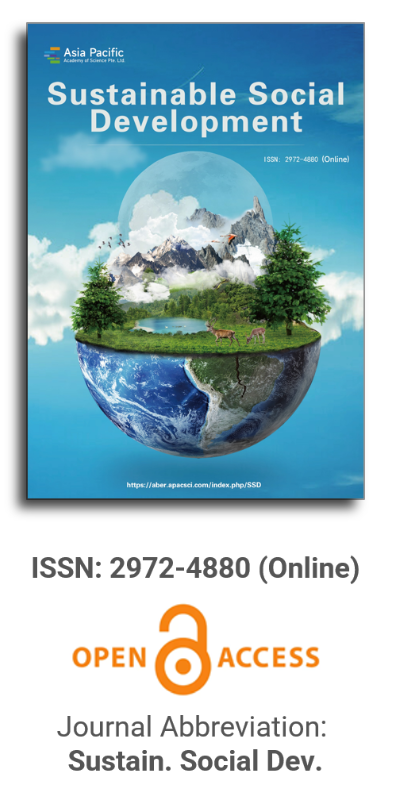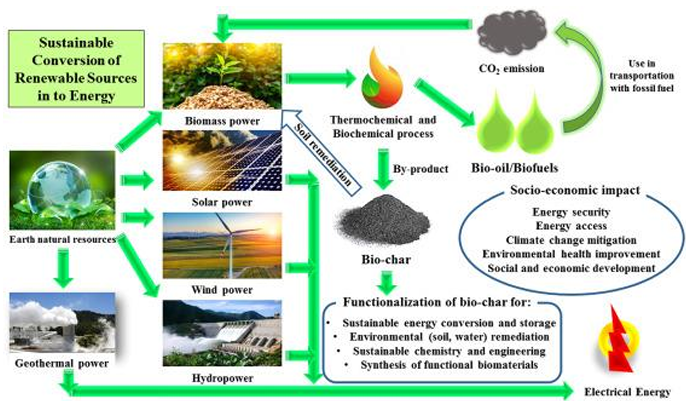
Asia Pacific Academy of Science Pte. Ltd. (APACSCI) specializes in international journal publishing. APACSCI adopts the open access publishing model and provides an important communication bridge for academic groups whose interest fields include engineering, technology, medicine, computer, mathematics, agriculture and forestry, and environment.

Microplastics and cosmetics: Problems and solutions
Vol 2, Issue 3, 2024
Download PDF
Abstract
Plastic waste and microplastics are invading lands and oceans, creating problems for animals, human health, and the environment. Packaging, building and construction, textiles, and cosmetic sectors are the main industries that utilize these non biodegradable materials. Thus, there is a necessity to find a new way of producing and consuming skin- and eco-compatible’ goods. For this purpose, it’s important to remember that the cosmetic and diet supplement markets are continually increasing, due also to the introduction of “Beauty from within,” based on the contemporary consumption of cosmeceuticals applied to the skin and nutraceuticals taken by oral route. Moreover, both of these products are made by emulsions or solutions based on a great consumption of water with the use of carriers rich in chemicals, which often cause allergy and sensitization problems. Thus, the proposed solution to use smart tissue carriers, which are embedded with natural ingredients, is based on the use of raw materials and biopolymers obtained from food and agroforestry waste. These new carriers, with a structure similar to the Extra Cellular Matrix, may be used to realize smart cosme-nutraceuticals useful to reduce water consumption, producing innovative products free of emulsifiers, preservatives, colors, fragrances, and other chemicals. So, it will be possible to save human health and the environment by maintaining natural raw materials and the biodiversity of the earth for future generations.
Keywords
References
- Ziani K, Ionita-Mindrican CB, Mititelu M, et al. Microplastics: A real global threat for environment and food safety: A state of the art review. Nutrients. 2023; 15(3): 617. doi: 10.3390/nu15030617
- Isobe A, Azusa T, Cordova MR, et al. A multilevel dataset of microplastic abundance in the world’s upper ocean and the Laurentian Great Lakes. Microplastics and Nanoplastics. 2022; 1(1): 1-14. doi: 10.1186/s43591-022-00013-z
- Richie H, Roser M. Plastic pollution, Our Word in Data. Available online: https://ourworldindata.org/plastic-pollution (accessed on 25 January 2024).
- Hernandez LM, Xu EG, Larsson HCE, et al. Plastic tea bags release billions of Microplastics and nanoparticles into tea. Environmental Science and Technology. 2019; 3(21): 12300-12310. doi: 10.1021/asc.est.9b02540
- Ragusa A, Svelato A, Santacroce C, et al. Plasticenta: First evidence of microplastics in human placenta. Environment International. 2021; 146: 106274. doi: 10.1016/j.envying.2020.106274
- Leslie HA, van Velzen MJM, Brandsma SH, et al. Discover and quantification of plastic particle pollution in human blood. Environment International. 2022; 163: 107199. doi: 10.1016/j.envint.2022.107199
- Shen M, Zheng Z, Wen X, et al. Presence of microplastics in drinking water from freshwater sources: The investigation in Changsha, China. Environmental Science and Pollution Research International. 2021; 28(31): 42313-42324. doi: 10.1007/s11356-021-13769-x
- Verla AW, Enyoh CE, Verla EN, Nwarnorh KO. Microplastics-toxic chemicals interaction: A review study on quantified levels, mechanism and implication. SN Applied Sciences. 2019; 1: 1400. doi: 10.1007/s42452-019-1352-0
- Morganti P, Morganti G, Gagliardini A, Lohani A. From cosmetics to innovative cosmeceuticals—Non-woven tissues as new biodegradable carriers. Cosmetics. 2021; 8(3): 65. doi: 10.3390/cosmeticd8030065
- Bianchi S, Bartoli F, Bruni C, et al. Opportunities and limitations in recycling fossil polymers from textiles. Macromol. 2023; 3(2): 120-148. doi: 10.3390/macromol3020009
- Westbrook G, Angus A. Top 10 global consumer trends 2021. Available online: https://go.euromonitor.com/white-paper-EC-2021-Top-10-Global-Consumer-Trends.html (accessed on 25 January 2024).
- Precedence Research. Cosmetics market trends and forecast 2021-2030. Available online: https://www.precedenceresearch.com/ (accessed on 25 January 2024).
- Morganti P. Natural products work in multiple ways. In: Tabor A, Blair RM (editors). Nutritional Cosmetics: Beauty from Within (Personal Care and Cosmetic Technology), 1st ed. William Andrew; 2009.
- RM. Nutraceuticals Global Market Report. Research and Markets; 2023.
- Plastic Pollution Coalition. The ugly side of beauty: The cosmetics industry’s plastic packaging problem. Available online: https://www.plasticpollutioncoalition.org/blog/2022/1/25/the-ugly-side-of-beauty-the-cosmetics-industrys-plastic-packaging-problem (accessed on 25 January 2024).
- Tolnay A, Koris A, Magda R. Sustainable development of cosmetic products in the frame of the laboratory market. Visegrad Journal on Bioeconomy and Sustainable Development. 2018; 7(2): 62-66. doi: 10.2478/vjbsd-2018-0012
- Fisher A. Sustainable skincare in 2021 and beyond. Available online: https://www.mintel.com/beauty-and-personal-care-market-news/sustainable-skincare-in-2021-and-beyond/ (accessed on 25 January 2024).
- Dini I, Laneri S. The new challenge of green cosmetics: Natural food ingredients for cosmetic formulations. Molecules. 2021; 26(13): 3921. doi: 10.3390/molecules262
- Montero-Rivière NA. Structure and function of skin. In: Monteiro-Riviere NA (editor). Toxicology of Skin. CRC Press; 2010. pp. 1-18.
- Wertz PW. Roles of lipides in the permeability barriers of skin and oral mucous. International Journal of Molecular Sciences. 2021; 22(10): 5229. doi: 10.3390/ijms22105229
- Lee HJ, Kim M. Skin barrier function and the microbiome. International Journal of Molecular Sciences. 2022; 23(21): 13071. doi: 10.3310/ijms232113071
- The World Bank. Securing our future through biodiversity. Available online: https://www.worldbank.org/en/news/immersive-story/2022/12/07/securing-our-future-through-biodiversity (accessed on 25 January 2024).
- Auta HS, Emenike CU, Fauziah SH. Distribution and importance of microplastics in the marine environment: A review of the sources, fate, effects and potential solutions. Environment International. 2017; 102: 165-176. doi: 10.1016/j.envint.2017.02.013
- Martins MS, Ferreira MS, Almeida IF, Sousa E. Occurrence of allergens in cosmetics for sensitive skin. Cosmetics. 2022; 9(2): 32. doi: 10.3390/cosmetics902003
- Herich D. What consumers want from beauty in 2023. Available online: https://www.gcimagazine.com/consumers-markets/news/22512091/what-consumers-want-from-beauty-in-2023 (accessed on 25 January 2024).
- Berg A, Davillard S, Balchandani A, et al. Apparel, Fashion & Luxury 2022, McKinsey Report. Available online: www.MacKinseyandcompany.com (accessed on 25 January 2024).
- NielsenIQ. The Blurring Lines of Beauty. Health & Wellness; 2022.
- Cosmetica Italia. Cosmetic Industry: Manufacture. Market and Foreign Trade; 2022.
- Morganti P, Coltelli MB. A new carrier for advanced cosmeceuticals. Cosmetics. 2019; 6(1): 10. doi: 10.3390/cosmetics6010010
- Morganti P, Morganti G, Colao C. Biofunctional textiles for aging skin. Biomedicines. 2019; 7(3): 51. doi: 10.3390/biomedicines7030051
- Morganti P, Morganti G, Coltelli MB. Skin and pollution: The smart nano-based cosmeceuticals-tissues to save the Planet’ecosystem. In: Nanda A, Nanda S, Nguyen TA, et al. (editors). Nanocosmetics: Fundamentals, Applications and Toxicity. Elsevier; 2020. pp. 287-304.
- Coltelli MB, Morganti P, Castelvetrano V, et al. Chitin nanofibril-nanolignin complexes as carriers of functional molecules of skin contact applications. Nanomaterials. 2022; 12(8): 1295. doi: 10.3390/12081295
- Danti S, Trombi L, Fusco A, et al. Chitin nanofibrils and nanolignin as functional agents in skin regeneration. International Journal of Molecular Sciences. 2019; 20(11): 2669. doi: 10.3390/ijms20112669
- Morganti P, Morganti G, Yudin VE, Chen HD. Chitin and lignin: Old polymers and new bio-tissue-carriers. Dermatology and Dermatitis. 2021; 6(3). doi: 10.31579/2578-8949/083
- Morganti P, Morganti G, Memic A, et al. The New Renaissance of Beauty and Wellness through the Green Economy. Latest Trends in Textile and Fashion Designing. 2021; 4(2); doi: 10.32474/LTTFD.2021.04.000185
- Cimini C, Gagliardini A, Di Fazio V. Bamboo-fibers: Physicochemical characteristics, biological properties and production process. Nanoscience & Nanotechnology. 2022; Unpublished Work.
- Morganti P, Chen HD and Morganti G. Nanocosmetics: Future Perspective. In: Nanda A, Nanda S, Nguyen TA, et al. (editors). Nanocosmetics: Fundamentals, Applications and Toxicity. Elsevier; 2020. pp. 455-481.
- Laurenti R, Singh J, Frostell B, et al. The Socio-economic embeddedness of the circular economy: An integrative framework. Sustainability. 2018; 10(7): 2129. doi: 10.3390/su10072129
- Padilla-Rivera A, Russo-Garrido S, Merveille N. Addressing the social aspects of a circular economy: A systematic literature review. Sustainability. 2020; 12(19): 7912. doi: 10.3390/su12197912
- Liu L, Ramakrishna S. An Introduction to Circular Economy. Springer Singapore; 2021.
- EU. Circular economy: Definition, importance and benefits. Available online: https://www.europarl.europa.eu/news/en/headlines/economy/20151201STO05603/circular-economy-definition-importance-and-benefits (accessed on 25 January 2024).
- UN. The circular economy, cooperatives and the social and solidarity economy. Available online: https://www.un.org/development/desa/cooperatives/2021/08/02/the-circular-economy-cooperatives-and-the-social-and-solidarity-economy/ (accessed on 25 January 2024).
- EMAF. The circular economy in detail. Available online: https://ellenmacarthurfoundation.org/the-circular-economy-in-detail-deep-dive (accessed on 25 January 2024).
- Morganti P, Morganti G, Memic A, et al. The new renaissance of beauty and wellness through the green economy. Latest Trends in Textile & Fashion Design. 2021; 4(2). doi: 10.32474/LTTFD.2021.04.000185
- Morganti P, Morganti G, Danti S, et al. Biodegradable nanomaterials for cosmetic and medical use. In: Kumar V, Guleria P, Dasgupta N, et al. (editors). Functionalized Nanomaterials. II Applications. CRC Press; 2021. pp. 62-73.
- Morganti P, Morganti G, Coltelli MB, et al. Non-woven tissues as novel cosmetic carriers for a green beauty. Advances in Environmental and Engineering Research. 2022; 3(2): 21. doi: 10.21926/aeer.2202021
- Morganti P, Morganti G, Gao X. Cosmeceutical-tissues as anti-aging active carriers. In: Morganti P (editor). Biofunctional Textiles for an Aging Skin. Lambert Academic Publishing; 2022. pp. 696-733.
- Morganti P, Morganti G, Palombo M. Research & innovation for sustainable products: Polysaccharides for a smart circular economy at zero waste. Clinical Research and Clinical Trials. 2021; 3(3): 37. doi: 10.31579/2693-4779/037
- Panariello L, Vannozzi A, Morganti P, et al. Biobased and eco-compatible beauty films coated with Chitin nanofibrils, nanolignin and Vitamin E. Cosmetics. 2021; 8(2): 27. doi: 10.3390/cosmetics8020027
- Coltelli MB, Morganti P, Lazzeri A. Sustainability assessment, environmental impact, and recycling strategies of biodegradable polymer nanocomposites. In: Deshmukh K, Pandey M (editors). Biodegradable and Biocompatible Polymer Nanocomposites. Elsevier; 2023. pp. 699-737.
Supporting Agencies
Copyright (c) 2024 Pierfrancesco Morganti, Maria-Beatrice Coltelli, Gianluca Morganti
License URL: https://creativecommons.org/licenses/by/4.0/

This site is licensed under a Creative Commons Attribution 4.0 International License (CC BY 4.0).

Prof. Kittisak Jermsittiparsert
University of City Island, Cyprus






It is with deep regret that we announce the cancellation of the Forum on Sustainable Social Development & Computing and Artificial Intelligence, originally scheduled for June 15, 2025.

